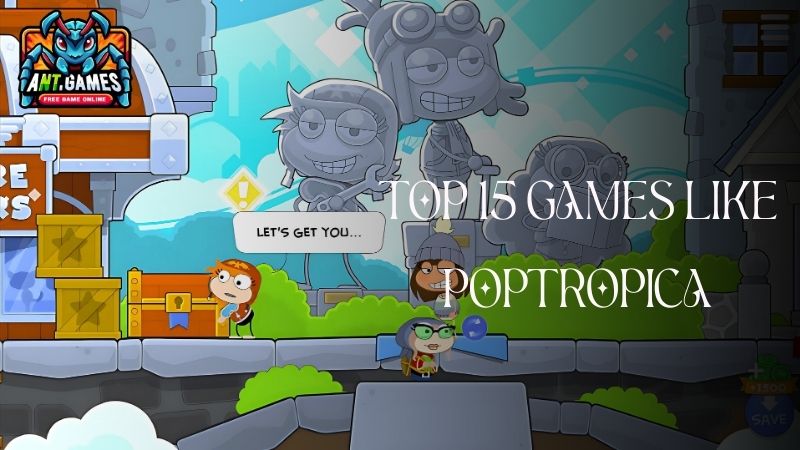In today’s digital world, video games are more than just a form of entertainment; they’ve evolved into complex interactive experiences that engage players in unique ways. A game’s success hinges on its features – the elements that define the player experience, shape gameplay, and ultimately determine its appeal.
Game features are the interactive components, mechanics, and systems that create immersive player experiences within video games, digital entertainment, and interactive software. These experiential elements are often built upon core gameplay mechanics like character progression, skill trees, achievement systems, and multiplayer capabilities. Modern games often blend mechanical features (e.g., combat systems, movement controls, resource management) and social features (e.g., online matchmaking, leaderboards, player communication).
Each feature category contributes to the overall player experience while fulfilling specific functional purposes within the game’s structure. In this article, AntGames will help you explore more details about game features, including some key categories, the difference between game features and game mechanics, and some key points of these features.
Core components of Game Features
Core gameplay features refer to the fundamental mechanics and systems that drive the overall experience of a game. These features are the backbone of the gameplay and define how players interact with the game world, what actions they can take, and how they progress throughout the game. Essentially, they are the essential elements that form the “core loop” that keeps players engaged. We will explore 10 core components of game features:
- Gameplay Mechanics: Core player interactions like abilities, combat, and progression systems, shaping the main loop and engagement.
- Progression Systems: Features like leveling, skill trees, and rewards, driving player growth and long-term motivation.
- Game World Design: Environment layout, world-building, and interactive elements that support exploration and immersion.
- Player Experience & Interface: Navigation, HUD, and accessibility features that ensure intuitive gameplay and clear information.
- Narrative & Storytelling: Plot, characters, and dialogue that provide context and personalization through player choices.
- Visual & Aesthetic Design: Art style and animation that define the game’s look, tone, and emotional impact.
- Sound & Music: Sound effects, voice acting, and music that enhance atmosphere and player immersion.
- Multiplayer & Social Features: Cooperative/competitive modes, social features, and matchmaking that build community engagement.
- Game Balance & Difficulty: Difficulty settings and balanced progression to ensure challenge without frustration.
- Monetization Features: Microtransactions, DLC, and ads that generate revenue while maintaining player experience

What are the differences between game features of browser games and others?
Here’s a comparison table that highlights key game features for browser games versus other types of games (console, PC, mobile, etc.):
|
Game Feature |
Browser Games |
Other Types of Games |
| Platform | Played directly in a web browser (Chrome, Firefox, etc.) | Played on dedicated platforms (console, PC, mobile apps) |
| Accessibility | Easy access, no downloads required, cross-platform (PC, mobile, etc.) | Requires installation, sometimes platform-specific |
| Graphics | Generally lower quality, 2D or simple 3D | High-quality 3D, often cinematic-level detail |
| Performance | Limited by browser capabilities, may lag on older devices | Optimized for specific hardware (console, high-end PCs) |
| Game Size | Small file size, runs on lower specs | Larger file sizes, often need more powerful hardware |
| Multiplayer | Many support asynchronous play or light real-time play | Extensive real-time multiplayer (PvP, co-op) |
| Offline Play | Typically online only | Can be played offline (single-player modes) |
| Updates/Content | Frequent updates, sometimes weekly; content often simple and repetitive | Regular updates, often large expansions and content drops |
| Monetization | Ad-supported, in-game microtransactions, freemium models | Paid upfront, subscriptions, DLCs, microtransactions |
| Customization | Limited character customization, simple skins/avatars | Extensive character and world customization |
| Game Controls | Basic controls, often point-and-click or simple key presses | Complex controls, especially for combat or action games |
| Story and Narrative | Often minimal or simple narrative, focus on gameplay loops | In-depth storylines, character development, branching paths |
| Sound and Music | Often basic or minimal soundtracks, may have ads | Full soundtracks, voice acting, immersive audio design |
| Interactivity | Limited, often focused on clicks, resource management, or light puzzle-solving | High interactivity with dynamic environments and combat |
| Community Features | Chat systems, leaderboards, social media integrations | Advanced multiplayer features like clans, guilds, and voice chat |
| Progression and Replayability | Focus on incremental progression and daily/weekly challenges | Strong progression with in-depth leveling, unlockables, and endgame content |
| Examples | Farmville, Slither.io, Agar.io, Cookie Clicker | The Witcher 3, Fortnite, Minecraft, Genshin Impact |
Game Features of Popular Browser Game Genres
Browser games come in a variety of genres, each offering a unique experience for players. From adrenaline-pumping action to strategic problem-solving, there’s something for everyone. Here, we explore five of the most popular browser game genres – action, shooting, driving, skill, and arcade games – and highlight the key features that define each one.
| Game Feature | Action Games | Shooting Games | Driving Games | Skill Games | Arcade Games |
| Gameplay Focus | Fast-paced, reflex-based action, combat | Shooting mechanics, targeting, and aiming | Racing or vehicular control, speed, and handling | Precision, timing, puzzle-solving, and reflexes | Simple, repetitive tasks, high score-based |
| Controls | Keyboard (WASD, arrow keys) or mouse for actions | Mouse for aiming, keyboard for movement or shooting | Arrow keys, WASD, or specialized controls for vehicles | Keyboard, mouse, or simple tap/drag controls | Easy-to-learn controls, often arrow keys or mouse |
| Graphics | Simple 2D or low-res 3D graphics | Simple 2D or 3D graphics, often pixelated or cartoony | 2D top-down or 3D graphics with simplified vehicle models | Minimalist or basic 2D graphics, usually simple art style | Retro pixel art, simple 2D visuals, or minimal 3D |
| Multiplayer | Local or online multiplayer (PvP) | Local or online multiplayer (PvP, coop) | Online racing, leaderboards, or co-op multiplayer | Often single-player, but may have local multiplayer | Local or online high score competition |
| Difficulty Level | Ranges from easy to difficult, with levels or stages | Varies: some with simple aiming, others tactical | Easy to challenging, with various difficulty levels | Challenging, based on player’s precision and timing | Simple but increases in difficulty as you progress |
| Progression/Rewards | Unlock levels, new abilities, and upgrades | Unlock weapons, new levels, and skins | Unlock new cars, tracks, and power-ups | Unlock levels, new challenges, or special items | Score-based progression, unlocking achievements |
| Game Modes | Story mode, time attack, survival modes | Story mode, free-for-all, team-based (e.g., deathmatch) | Time trial, racing mode, obstacle course | Level-based, puzzle challenges, or reaction-based | High-score chase, endless play mode |
| Replayability | High, due to new stages or combat challenges | High, with different game modes and player skill levels | Moderate, mostly around improving speed or handling | Moderate, but based on player improvement in skill | High, driven by achieving higher scores or beating records |
| Speed | Fast-paced, requiring quick reflexes | Fast-paced, with fast aiming and shooting mechanics | Fast driving, requiring reaction time and precision | Varies, but often quick, requiring quick thinking | Fast-paced, often with quick time limits or countdowns |
| Visual Style | Often stylized, colorful, or simple designs | Pixel art, cartoony, or realistic based on theme | Simple, sometimes with stylized vehicles or environments | Minimalist or pixel art, easy-to-follow design | Retro, pixel art, minimalistic, vibrant colors |
| Examples | Super Mario Bros Online, Stick Fight | Mad GunZ, ShellShock Live | Drift Hunters, Madalin Stunt Cars 2 | 2048, Cut the Rope, Tic Tac Toe | Pac-Man, Space Invaders, Flappy Bird |
What exactly are game features compared to game mechanics?
Game features refer to any noticeable aspect of a game, including gameplay elements, visual design, story, and technical capabilities, while game mechanics are the core rules and systems that define how players interact with the game, essentially the fundamental building blocks of how the gameplay works; features are broader and describe the overall experience, while mechanics focus on the specific actions and interactions within the game itself.

What Makes Game Features Important?
Business Value
Virtual goods and cosmetic enhancements generate substantial revenue through microtransactions, turning these games into profitable ventures. In a role-playing video game, player customization features, such as character skins and digital avatar accessories, provide opportunities for monetization while enabling player self-expression.
Design Elements
Core design elements drive player engagement and create memorable game experiences. Key components include compelling aesthetics (graphics, sound), engaging narratives (story, characters), rewarding progression, effective feedback, and social systems. Integrating these elements fosters player retention and community building.
Technical Innovation
Technological evolution drives interactive entertainment, enhancing gameplay through advanced architectures and photorealistic environments. Key innovations include dynamic environments, AI systems, hyper-realistic rendering, cross-platform compatibility, and cloud gaming. These advancements improve development processes, user experiences, and long-term engagement through iterative content updates and innovative mechanics, creating more immersive virtual worlds.

See more: Tps gaming
What Makes a Good Game Feature?
A good game feature enhances engagement by integrating seamlessly with the game’s core mechanics and story. It should offer clear objectives that motivate players while maintaining a balance between challenge and accessibility within the game genre.
Innovation is important, but new features must align with familiar gameplay patterns. Features should also work cohesively with existing systems to avoid disrupting immersion. Finally, effective reward systems validate player effort with meaningful progress and feedback.
How Do Game Features Impact Gameplay?
Game features strongly influence player interaction, creating interconnected systems of mechanics, dynamics, and aesthetics. These elements build gameplay loops, win conditions, and reward systems, ensuring player engagement.
Progressive feature unlocking keeps players engaged by introducing new abilities, items, and story elements at strategic intervals. This structured progression ensures skill development before introducing more complex gameplay elements. Player agency is enhanced through well-designed features, making decisions about character progression, equipment, and narrative choices impactful in gameplay.
Supporting features like intuitive UI, responsive controls, and continuous feedback further immerse players, making their choices feel meaningful. Successful games integrate features seamlessly, creating a cohesive experience where mechanics, narrative, and aesthetics support one another.

Game features are key components in browser games that define interactive entertainment, including gameplay mechanics, user interfaces, progression systems, and audiovisual elements. These features shape player engagement through gameplay loops, control schemes, and secondary systems like achievement tracking and social features. As technology evolves, innovations like AI, procedural generation, and cross-platform compatibility enhance gaming experiences. The integration of established and emerging features drives the evolution of gaming, offering more engaging experiences. For experiencing amazing gaming features, let’s visit AntGames!





